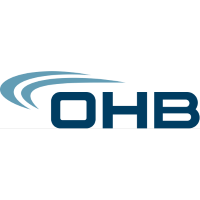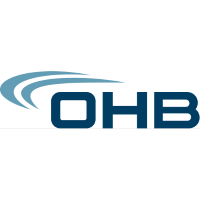
OHB SE
XETRA:OHB


| US |

|
Johnson & Johnson
NYSE:JNJ
|
Pharmaceuticals
|
| US |

|
Berkshire Hathaway Inc
NYSE:BRK.A
|
Financial Services
|
| US |

|
Bank of America Corp
NYSE:BAC
|
Banking
|
| US |

|
Mastercard Inc
NYSE:MA
|
Technology
|
| US |

|
UnitedHealth Group Inc
NYSE:UNH
|
Health Care
|
| US |

|
Exxon Mobil Corp
NYSE:XOM
|
Energy
|
| US |

|
Pfizer Inc
NYSE:PFE
|
Pharmaceuticals
|
| US |

|
Palantir Technologies Inc
NYSE:PLTR
|
Technology
|
| US |

|
Nike Inc
NYSE:NKE
|
Textiles, Apparel & Luxury Goods
|
| US |

|
Visa Inc
NYSE:V
|
Technology
|
| CN |

|
Alibaba Group Holding Ltd
NYSE:BABA
|
Retail
|
| US |

|
3M Co
NYSE:MMM
|
Industrial Conglomerates
|
| US |

|
JPMorgan Chase & Co
NYSE:JPM
|
Banking
|
| US |

|
Coca-Cola Co
NYSE:KO
|
Beverages
|
| US |

|
Walmart Inc
NYSE:WMT
|
Retail
|
| US |

|
Verizon Communications Inc
NYSE:VZ
|
Telecommunication
|
Utilize notes to systematically review your investment decisions. By reflecting on past outcomes, you can discern effective strategies and identify those that underperformed. This continuous feedback loop enables you to adapt and refine your approach, optimizing for future success.
Each note serves as a learning point, offering insights into your decision-making processes. Over time, you'll accumulate a personalized database of knowledge, enhancing your ability to make informed decisions quickly and effectively.
With a comprehensive record of your investment history at your fingertips, you can compare current opportunities against past experiences. This not only bolsters your confidence but also ensures that each decision is grounded in a well-documented rationale.
Do you really want to delete this note?
This action cannot be undone.

| 52 Week Range |
42.5
48.9
|
| Price Target |
|
We'll email you a reminder when the closing price reaches EUR.
Choose the stock you wish to monitor with a price alert.

|
Johnson & Johnson
NYSE:JNJ
|
US |

|
Berkshire Hathaway Inc
NYSE:BRK.A
|
US |

|
Bank of America Corp
NYSE:BAC
|
US |

|
Mastercard Inc
NYSE:MA
|
US |

|
UnitedHealth Group Inc
NYSE:UNH
|
US |

|
Exxon Mobil Corp
NYSE:XOM
|
US |

|
Pfizer Inc
NYSE:PFE
|
US |

|
Palantir Technologies Inc
NYSE:PLTR
|
US |

|
Nike Inc
NYSE:NKE
|
US |

|
Visa Inc
NYSE:V
|
US |

|
Alibaba Group Holding Ltd
NYSE:BABA
|
CN |

|
3M Co
NYSE:MMM
|
US |

|
JPMorgan Chase & Co
NYSE:JPM
|
US |

|
Coca-Cola Co
NYSE:KO
|
US |

|
Walmart Inc
NYSE:WMT
|
US |

|
Verizon Communications Inc
NYSE:VZ
|
US |
This alert will be permanently deleted.
 OHB SE
OHB SE
OHB SE
OHB SE operates as a holding company, which engages in space and aeronautic technology, telematics, and satellite services. The company is headquartered in Bremen, Bremen and currently employs 2,962 full-time employees. The company went IPO on 2008-02-25. The firm operates in two segments: Space Systems, developing and executing space projects, low-orbiting and geostationary small satellites for navigation, research, communications and earth observations including scientific payloads; and Aerospace + Industrial Products, responsible for fabricating aviation and space products as well as other industrial activities. The firm operates through a number of subsidiaries located in Germany, Italy, Luxembourg, Belgium, France, Sweden, the United Kingdom and French Guiana, including OHB Logistic Solutions GmbH, OHB France SAS, OHB Sweden AB, MT Aerospace Guyane SAS and ORBCOMM Deutschland Satellitenkommunikation AG.

OHB SE operates as a holding company, which engages in space and aeronautic technology, telematics, and satellite services. The company is headquartered in Bremen, Bremen and currently employs 2,962 full-time employees. The company went IPO on 2008-02-25. The firm operates in two segments: Space Systems, developing and executing space projects, low-orbiting and geostationary small satellites for navigation, research, communications and earth observations including scientific payloads; and Aerospace + Industrial Products, responsible for fabricating aviation and space products as well as other industrial activities. The firm operates through a number of subsidiaries located in Germany, Italy, Luxembourg, Belgium, France, Sweden, the United Kingdom and French Guiana, including OHB Logistic Solutions GmbH, OHB France SAS, OHB Sweden AB, MT Aerospace Guyane SAS and ORBCOMM Deutschland Satellitenkommunikation AG.





























 You don't have any saved screeners yet
You don't have any saved screeners yet
